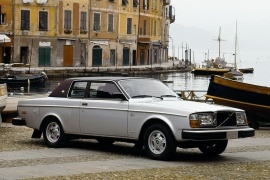VOLVO 262 Models/Series Timeline, Specifications & Photos
First production year: 1977
Engines: Gasoline
Body style: Coupé (two-door)
Volvo tried a new approach on the market and introduced the 262C as a personal luxury coupe in 1977 with some help from Bertone.
Volvo was focused more on safety and reliability than on performance, but it still had to admit that coupes were the head-turners in the automotive industry. At least, that was true back in the mid-70s when the 262C appeared on the market. Then, the coupe was based on the regular 200-series sedan, fitted with a six-cylinder engine and a bodywork built, in part, by Bertone in Italy.
In the U.S., the "chop the roof" way of modding cars was extensively used by individuals. On the other hand, Volvo called Bertone and cut a deal with the Italian company. While the design was signed by a Swedish, the bodywork's final assembly was made in Bertone's factory. The car sported a flat front fascia with the Volvo-specific wedged shapes for the grille and headlights. With a roof lowered by some 10 cm (4") than the regular sedan, a thick C-pillar, and narrow windows and windshield, it looked like a tank without a gun.
Inside, the cabin was fitted with the most luxurious items that Volvo had in its basket. It had everything fitted as standard, from the leather-wrapped seats to the wood trims on the dash and door cards. Moreover, even though the Swedish customers didn't need an air-conditioning unit, that was also a standard feature. In addition to the front bucket seats, the automaker also installed a bench for two in the back. Still, due to the limited headroom, it wasn't easy to send someone there unless it was a child.
Under the hood, Volvo installed its latest powerplant; the 2.7-liter PRV engine developed together with Peugeot and Renault. It didn't provide too much power, but thanks to the fuel-injected system, it had a decent fuel efficiency.
